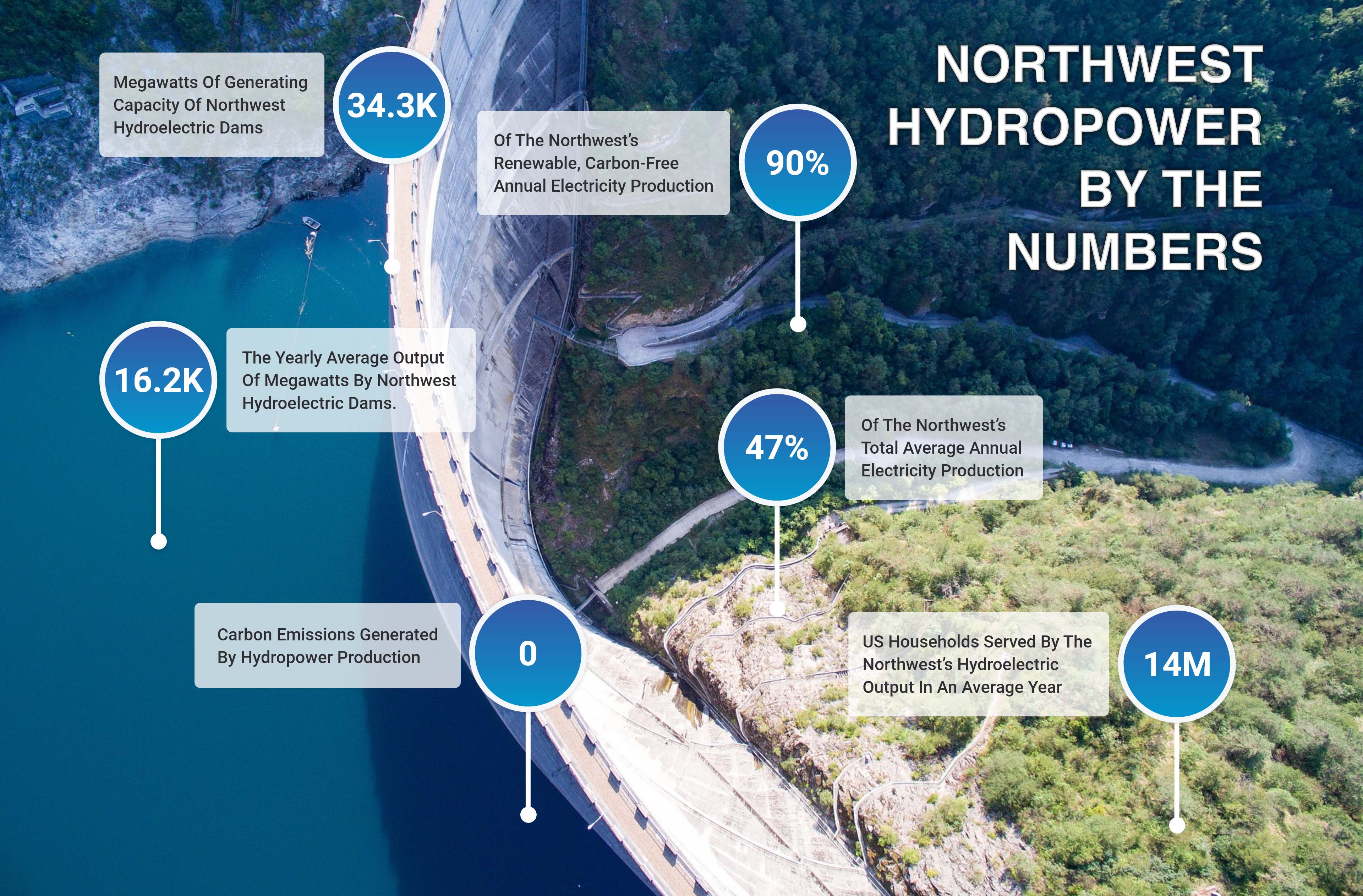The Basics of Hydroelectric Dams
Hydropower has existed for a long, long time. Before there were hydroelectric dams. People harnessed the energy from flowing water to turn water wheels to power basic machinery. With the introduction of electricity, people applied this same concept to spinning turbines to generate energy and the hydroelectric dam was born.
How Does A Hydroelectric Dam Work
Dams create reservoirs or pools of water. To generate hydro electricity, reservoir water is released through tunners or pipes and aimed at turbine blades. The force of the water turns the turbines like a revolving door. The turbine is lined with copper wire, so when it rotates inside large stationary magnets, electricity is generated. The water then exits through another pipe and returns to the river.
However, not all water from the river flows through the dam itself. Some water can be allowed to bypass the dam. This process is called spill. Spill can be used when additional water needs to be released or when it is necessary to bypass turbines. There are many factors besides energy demand that determine how much water is stored or spilled. These factors include water level, water temperature, and the rate of flow. For example, sometimes spill is used to help salmon avoid contact with turbines.


What Are The Advantages of Hydroelectric Dams?
-
1
Perhaps the greatest advantage of hydroelectricity is its simplicity, as it relies on merely gravity and the flow of water to generate energy. The result of using rivers as a source of fuel is that no pollution is created as a byproduct, making hydropower a clean energy source. Additionally, the efficiency of this form of generation means that it has the capacity to deliver massive amounts of power when installed on larger rivers. And, unlike most other forms of energy generation, the fuel for hydropower can be used repeatedly as it passess from one dam down to the next. This aids in the renewability of hydro, while driving down it's costs.
-
2
Another advantage to hydroelectric dams is their ability to store energy to be used later. By controlling the flow of water, they can store or release water to generate more or less electricity, depending on demand. In essence, they operate similarly to a battery. This reliability is important to keeping the electrical grid stable, and it pairs well with other renewables that depend on intermittently available fuel sources.
-
3
Beyond generating and storing energy, hydroelectric dams also provide an opportunity to have greated control over rivers. This allows for important opportunities for both commercial and recreational activity. Hydroelectricity helps make waters more navigateable for ships and barges that transport valuable goods around the world. Behind the dams, reservoirs are used for boating, fishing, swimming and more. Together, these advantages help create thriving communities near hydroelectric dams. Dams also offer many commiunities safety and security against dangeroues floods.
What Are The Disadvantages of Hydroelectric Dams?
-
1
No energy is perfect, and hydroelectric dams do have their drawbacks. One of the unavoidable consequences of using hydroelectricity is that if effects that natural flow of a river. This can be an advantage for humans, but a disadvantage for the ecosystem. The slower flow of the river can allow for invasive species to take us residence when introduced and can alter the riverbed itself. Dams without fish passage are especially problematic for fish that are migratory in nature.
-
2
It is important to point out that many of the lower and mid-Columbia Dams, as well as the lower Snake River dams, have been extensively modified and outfitted to reduce their impact. In the Northwest, hydroelectric dams also destroyed or cut off access to important cultural sites for Native Americans. Many of these sites were waterfalls where native people could fish the abundant runs of salmon. Today, hydroelectric operators recognize that it is important to work together with local tribes to restore culturally significant sites and fish populations.
Hydropower Fast Facts
![]()
There are many privately owned dams in addition to the federal hydroelectric dams. They are operated by private and customer owned utilities.
![]()
Northwest hydropower produces no carbon emissions, thereby significally reducing the total carbon footprint of the region’s energy production.
![]()
The Columbia River is the largest river in the Pacific Northwest, and its largest tributary is the Snake River. Combinded, they stretch across the United States and Canada, from the Rocky mountains to the Pacific Ocean.
![]()
The federal dams on the Columbia and Snake Rivers are operated by the U.S Army Corps of Engineers and the Bureau of Reclamation. Bonneville Power Administration markets the power produced by the dams to Northwest utilities and beyond.
Hydopower Essentials
There’s far more to dams than meets the eye. Beyond the concrete and turbines, they provide numerous benefits to our region through the power they generate and the opportunities they provide.

Supporting Wind and Solar
Solar and wind are growing but they require backup because their output fluctuates minute-to-minute. Hydroelectric dams help balance the fluctuations of solar…

Salmon Recovery
Salmon are iconic in the Pacific Northwest. More than iconic, they feed our ecosystems and are at the heart of Northwest Native American culture.

Hydropower
The Northwest’s hydroelectric dams deliver carbon-free, low-cost power to people all across the region. First constructed as part of President Franklin D. Roosevelt’s New Deal.
